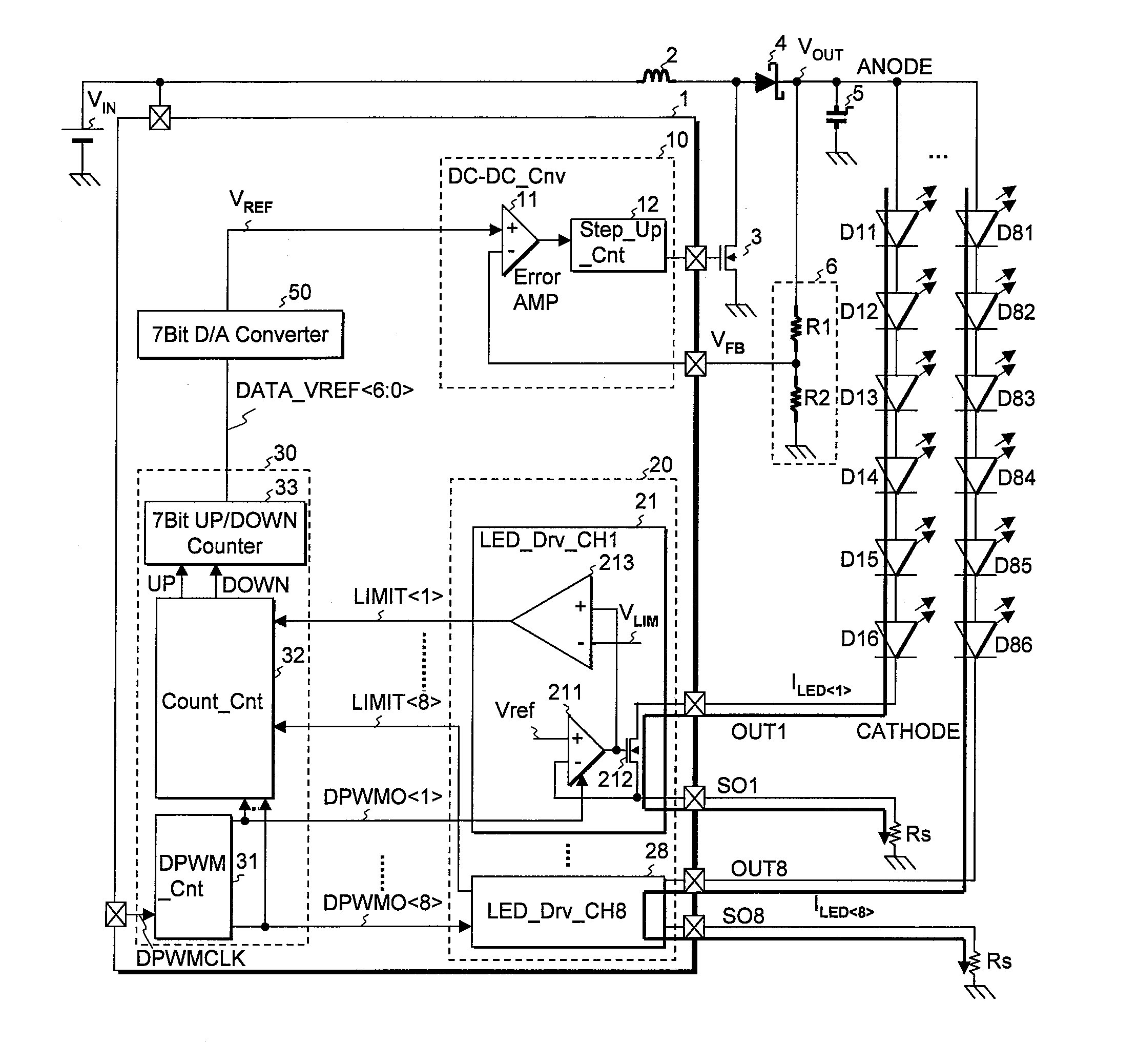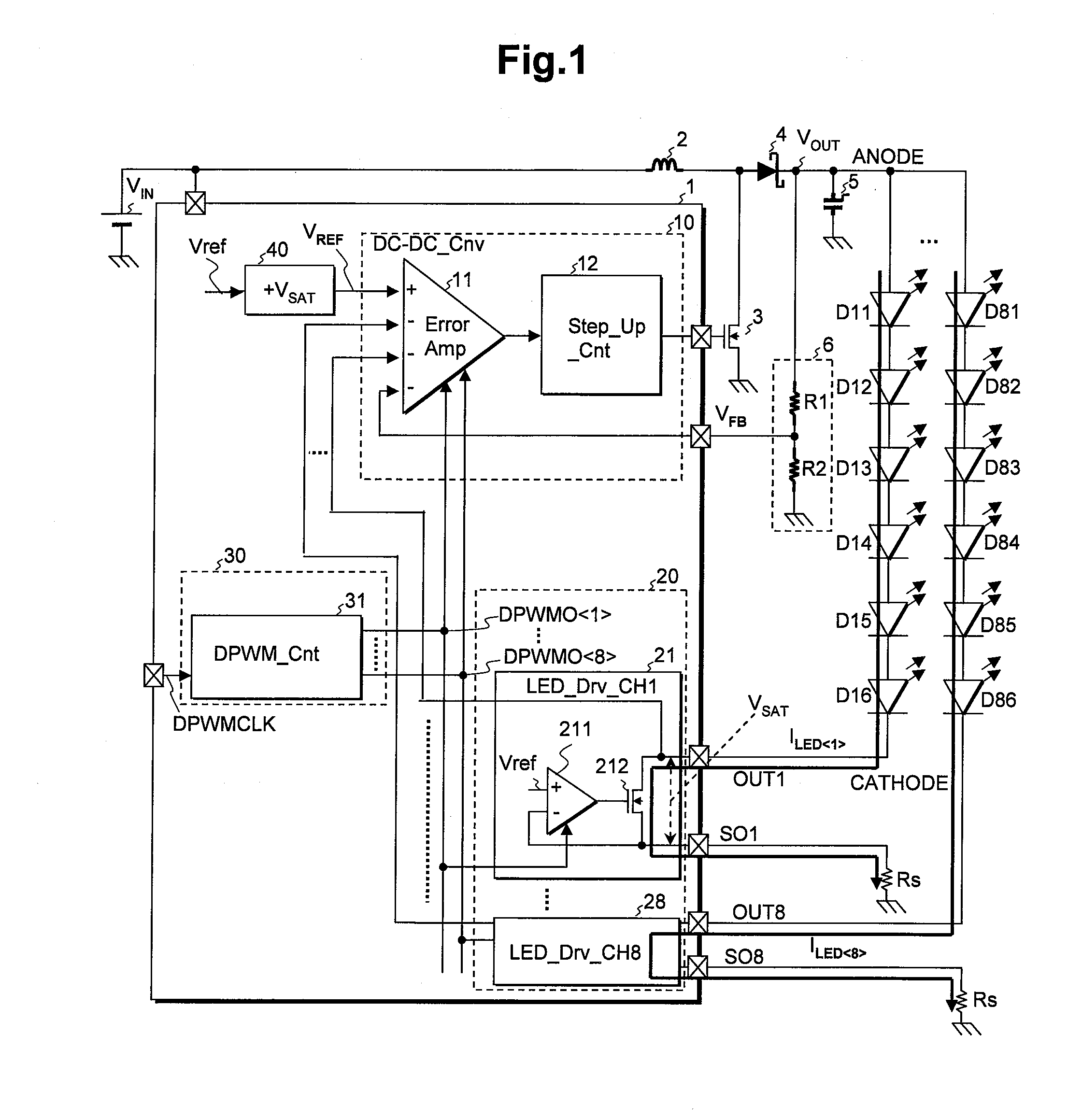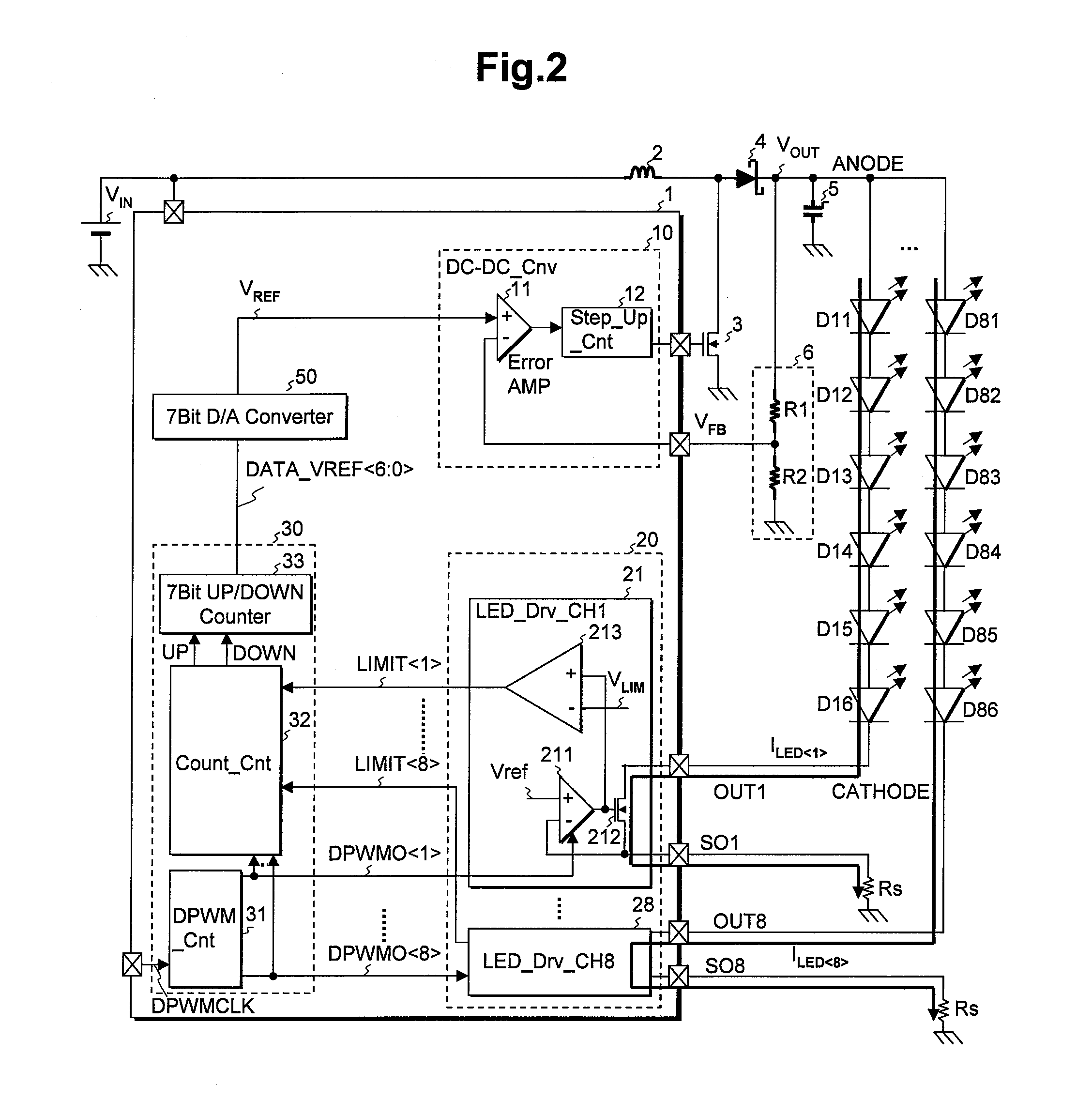Semiconductor integrated circuit and operation method thereof
a technology of integrated circuits and semiconductors, applied in the direction of electric variable regulation, process and machine control, instruments, etc., can solve the problems of not being able to raise the output dc voltage v/sub>out above its limit, disadvantageous for obtaining constant current characteristics, etc., and achieve the effect of reducing the power consumption of the system
- Summary
- Abstract
- Description
- Claims
- Application Information
AI Technical Summary
Benefits of technology
Problems solved by technology
Method used
Image
Examples
first embodiment
[First Embodiment]
[0107]>
[0108]FIG. 2 is a diagram showing a configuration of a semiconductor integrated circuit for controlling and driving a white LED array, according to a first embodiment of the present invention.
[0109]The semiconductor integrated circuit 1 shown in FIG. 2 is comprised of a step-up DC-DC converter 10, a constant current driver 20 having eight channels (eight strings), a logic unit 30 and a reference voltage generation D / A converter 50. The logic unit 30 includes a 12-bit (4096-gradation) dimming controller 31, a counter controller 32 and an up / down counter 33. In the example of FIG. 2, for example, the DC-DC converter 10 is configured as a step-up DC-DC converter since an input DC voltage VIN is a relatively low voltage as in the case where its voltage range is from 10V to 26.0V. As another example, the DC-DC converter 10 is configured as a step-down DC-DC converter where the input DC voltage VIN is a relatively high voltage. As a further example, the DC-DC conv...
second embodiment
[0173]>
[0174]FIG. 5 is a diagram showing a processing flow of a calibration operation for an output DC voltage VOUT according to a second embodiment of the present invention, which is carried out in the semiconductor integrated circuit 1 of the present invention shown in FIG. 2.
[0175]At the first Step 500 of FIG. 5, the count value DATA_VREF6:0> of the up / down counter 33 is set to a predetermined initial value 3 Fh, and the low voltage find signal LOW_FIND indicative of first finding of the minimum voltage of the output DC voltage VOUT is set to a low level. The step-up controller 12 of the DC-DC converter 10 sets the reference voltage VREF corresponding to the initial value to 1.875V.
[0176]At the next Step 501, the counter controller 32 reads approximately in parallel, the levels of the abnormality detection determination signal LIMIT1> of the driver unit 21 through the abnormality detection determination signal LIMIT8> of the driver unit 28 for the eight channels in total. Actuall...
third embodiment
[0190]>
[0191]FIG. 6 is a diagram illustrating a configuration of a semiconductor integrated circuit for controlling and driving a white LED array, according to the third embodiment of the present invention.
[0192]The semiconductor integrated circuit 1 according to the third embodiment of the present invention shown in FIG. 6 is different in the following points from the semiconductor integrated circuit 1 according to the first embodiment of the present invention shown in FIG. 2.
[0193]That is, an inversion input terminal and a non-inversion input terminal of an abnormality detection comparator 213 of a driver unit 21 of a constant current driver 20 in the semiconductor integrated circuit 1 according to the third embodiment of the present invention shown in FIG. 6 are respectively supplied with a voltage (voltage at a constant current set terminal SO1 of the driver unit 21) at a source terminal of an N channel MOS transistor 212, and an abnormality detection criterion voltage VLIM. Inc...
PUM
 Login to View More
Login to View More Abstract
Description
Claims
Application Information
 Login to View More
Login to View More - R&D
- Intellectual Property
- Life Sciences
- Materials
- Tech Scout
- Unparalleled Data Quality
- Higher Quality Content
- 60% Fewer Hallucinations
Browse by: Latest US Patents, China's latest patents, Technical Efficacy Thesaurus, Application Domain, Technology Topic, Popular Technical Reports.
© 2025 PatSnap. All rights reserved.Legal|Privacy policy|Modern Slavery Act Transparency Statement|Sitemap|About US| Contact US: help@patsnap.com



